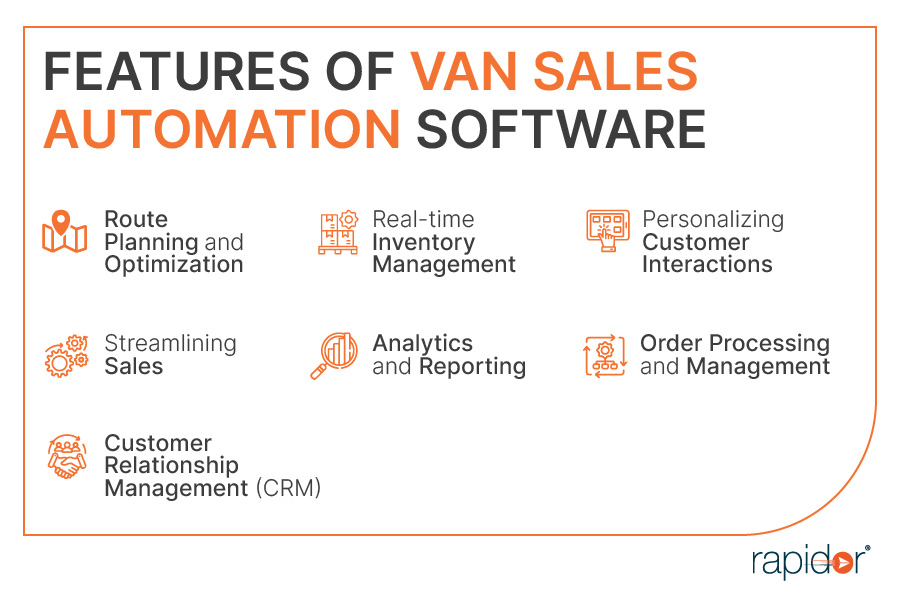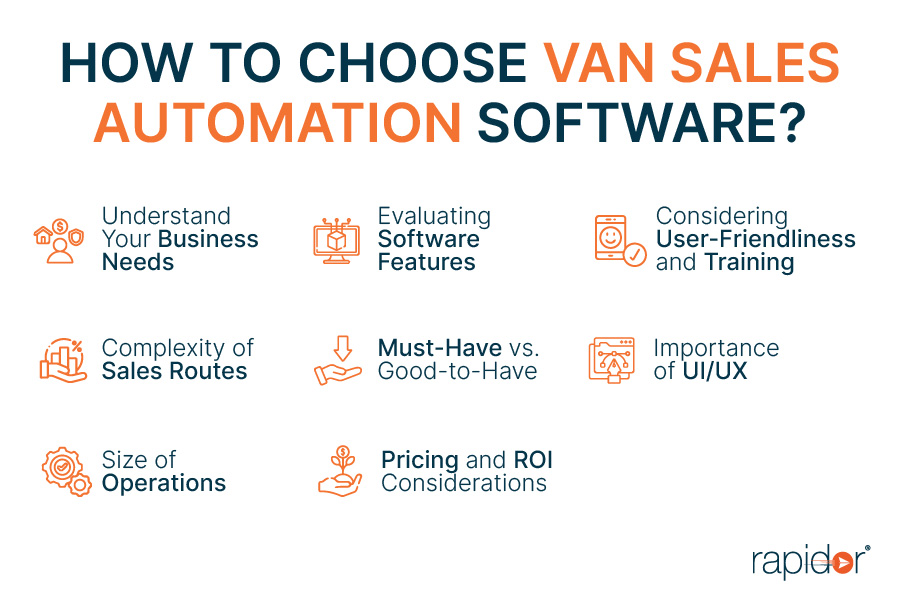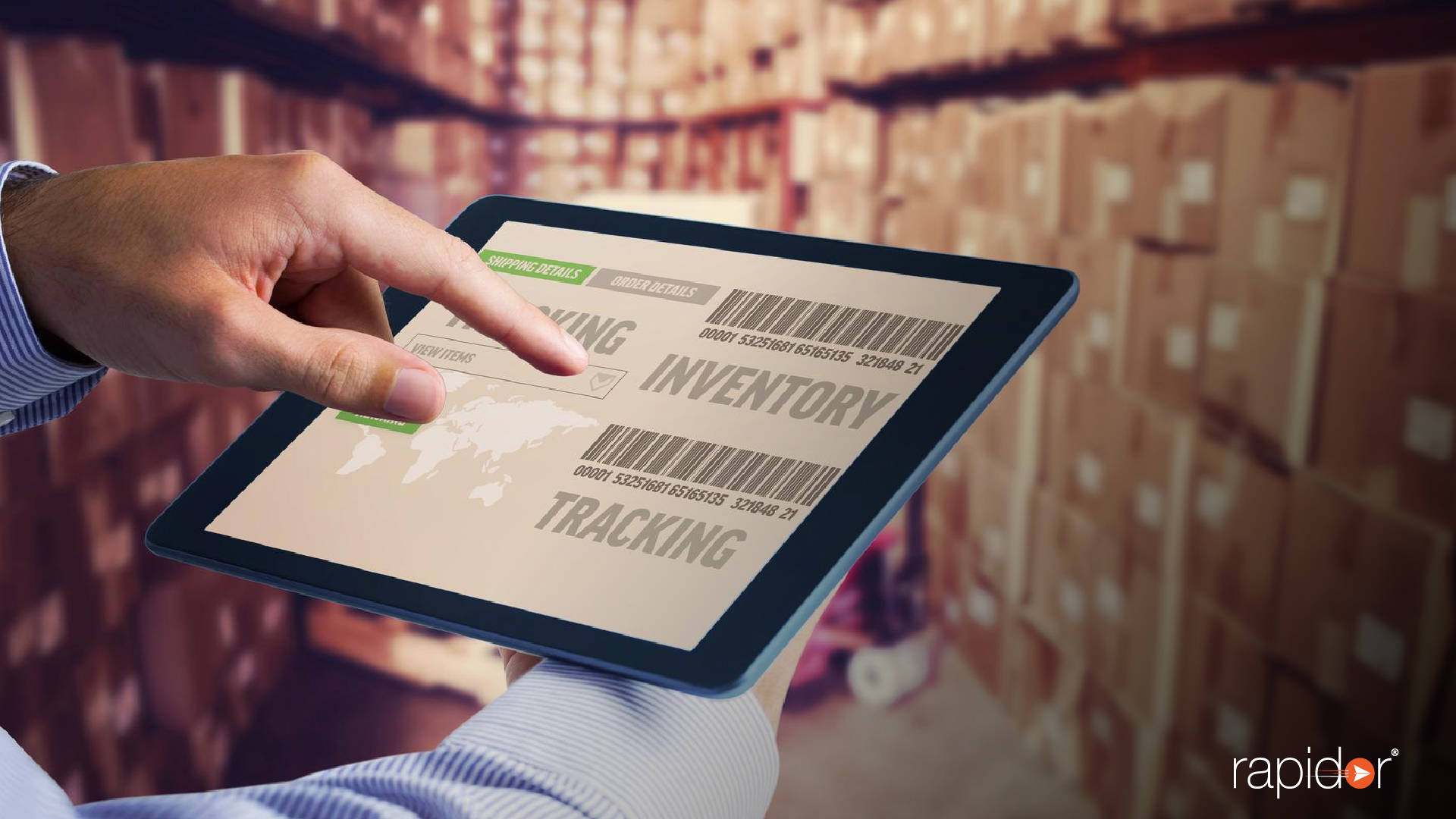The evolution of sales automation has revolutionized the way businesses operate, providing streamlined processes, enhanced productivity, and improved customer experiences. In certain industries, such as fast-moving consumer goods (FMCG), van sales play a crucial role in reaching customers directly and efficiently.
Van sales teams are on the frontline, connecting with customers on-site, taking orders, and ensuring timely deliveries. As the FMCG industry in India continues to grow, the need for efficient van sales automation becomes indispensable.
This guide explores the significance of van sales automation, its benefits, and the key features to consider when choosing the right software for modern businesses. Discover how embracing automation can propel van sales to new heights and drive success in today’s fast-paced market landscape.
Understanding Van Sales
Definition of Van Sales
Van sales, also known as direct store delivery (DSD), refers to a method of selling where sales representatives travel to retail stores, wholesalers, or customers directly in a van or a mobile sales unit. These representatives carry a variety of products with them and take orders on-site, allowing for immediate product delivery to the customer’s location. Van sales are particularly prevalent in industries like FMCG, where perishable or high-demand products require swift and efficient distribution.
Brief History and Evolution
The concept of van sales dates back to early trade routes, where merchants would travel with goods and offer them to customers along their journeys. Over time, the practice evolved, with the emergence of motorized vehicles enabling faster and more extensive distribution networks. As the FMCG industry expanded, van sales became a vital channel for reaching customers in remote or densely populated areas, providing convenience and accessibility.
Importance in Today’s Market Landscape
In today’s dynamic market landscape, van sales play a critical role in bridging the gap between producers and end-consumers. With the rise of e-commerce and changing consumer preferences, van sales enable businesses to establish a direct and personalized connection with customers. It offers real-time interactions, immediate order processing, and on-the-spot problem-solving, enhancing customer satisfaction and loyalty. Van sales also allow businesses to respond quickly to changing market demands and maintain a competitive edge in the FMCG industry. As technology continues to advance, van sales automation software is becoming increasingly crucial for optimizing operations and driving business growth.
Introduction to Sales Automation
Definition and Core Components
Sales automation refers to the use of technology and software tools to streamline and automate various sales-related tasks and processes. The core components of sales automation include customer relationship management (CRM) systems, sales force automation (SFA) tools, and data analytics. These components work together to optimize the sales process, from lead generation and prospecting to order management and customer support.
What It Means
Sales automation empowers sales teams with advanced tools and data-driven insights, enabling them to work more efficiently and effectively. By automating repetitive and time-consuming tasks, sales professionals can focus on building relationships, closing deals, and driving revenue growth.
Why It’s Crucial in Today’s Fast-Paced World
In today’s fast-paced business landscape, the ability to respond swiftly to market changes and customer demands is paramount. Sales automation streamlines workflows, reduces manual errors, and accelerates sales cycles, allowing businesses to stay competitive and agile. With the rise of e-commerce, digitalization, and remote work, sales automation becomes even more critical for organizations to adapt and thrive.
Benefits of Automation in Sales
Efficiency:
Sales automation eliminates manual data entry and administrative tasks, saving valuable time and resources. It enables sales representatives to focus on high-value activities, such as building relationships and closing deals, leading to increased productivity.
Accuracy:
Automation reduces human errors and ensures data consistency throughout the sales process. This accuracy fosters reliable forecasting and better decision-making for sales managers and executives.
Enhanced Customer Experiences:
With automation, sales teams can provide personalized and timely interactions with customers. CRM systems track customer preferences and purchase history, enabling sales representatives to offer tailored solutions and anticipate their needs.
Why Van Sales Need Automation
Van sales play a crucial role in industries that require on-the-go sales and delivery operations. However, traditional van sales processes come with various challenges that can hinder efficiency and profitability. Sales automation through the adoption of Software as a Service (SaaS) solutions has emerged as a game-changer, addressing these challenges and transforming the way van sales operate.
Challenges in Traditional Van Sales
Tracking Issues:
In traditional van sales, tracking the movement of sales representatives and vehicles can be challenging. Lack of real-time visibility into their location and activities can lead to inefficient route planning, missed opportunities, and delays in customer service.
Inventory Mismanagement:
Manual tracking of inventory levels in vans can result in stockouts or overstocking. Without accurate information on product availability, sales representatives may fail to fulfill customer orders promptly or carry excess inventory, leading to increased costs.
Inefficiencies in Order Taking:
Manual order taking processes can be time-consuming and error-prone. Sales representatives may face difficulties in accessing product information, pricing, and promotions, which can impact the overall sales experience for customers.
The Rise of SaaS in Addressing These Challenges
Scalability:
SaaS-based van sales automation solutions offer scalability, allowing businesses to adapt to changing demands and expand their operations seamlessly. As sales volumes grow, the software can accommodate increasing data and transaction volumes without the need for significant infrastructure investments.
Cloud Benefits:
SaaS platforms are cloud-based, enabling real-time data access from anywhere with an internet connection. This feature provides sales representatives and managers with up-to-date information on inventory, customer preferences, and sales performance, enabling data-driven decision-making.
Cost Efficiency:
Implementing a SaaS van sales automation system eliminates the need for costly on-premises hardware and software installations. Businesses can save on infrastructure expenses and reduce the burden of maintaining IT resources, leading to cost efficiencies.
With van sales automation powered by SaaS, sales representatives equipped with mobile devices can efficiently manage their sales routes, access real-time inventory information, and take orders digitally. These solutions streamline the entire sales process, from order creation to invoicing and payment collection. This level of automation reduces manual errors, minimizes paperwork, and accelerates order processing, resulting in increased productivity and enhanced customer satisfaction.

Features of Van Sales Automation Software
Van sales automation software is a comprehensive solution designed to enhance the efficiency and effectiveness of on-the-go sales operations. It comes equipped with a range of features that empower sales representatives and enable businesses to optimize their van sales processes.
Route Planning and Optimization:
Van sales automation software streamlines route planning by optimizing the sequence of customer visits based on factors such as location, order priority, and traffic conditions. This feature ensures that sales representatives take the most efficient route, reducing travel time and increasing the number of customers they can visit in a day.
Real-time Inventory Management:
The software provides real-time visibility into inventory levels in each van. Sales representatives can check product availability on their mobile devices and update inventory data after each sale or delivery. This feature helps prevent stock-outs, ensuring that sales representatives can fulfill customer orders promptly.
Order Processing and Management:
Van sales automation software enables digital order processing and management. Sales representatives can use mobile devices to create, modify, and process orders on the spot. The software automatically updates inventory levels and generates invoices, streamlining the entire order fulfillment process.
Customer Relationship Management (CRM):
The CRM feature allows sales representatives to maintain a centralized database of customer information, including contact details, purchase history, and preferences. This data helps sales representatives personalize their interactions with customers, improving customer satisfaction and loyalty.
Streamlining Sales:
The software simplifies the sales process by providing easy access to product catalogs, pricing, and promotions. Sales representatives can quickly present product information to customers and offer relevant discounts or promotions, leading to faster and more efficient sales transactions.
Personalizing Customer Interactions:
With access to customer data and purchase history, sales representatives can personalize their interactions with each customer. They can make product recommendations based on customer preferences, enhancing the overall customer experience.
Analytics and Reporting:
Van sales automation software generates detailed analytics and reports on sales performance, inventory levels, customer behavior, and more. These insights enable businesses to make data-driven decisions and identify opportunities for improvement in their van sales operations.
Benefits of Implementing Van Sales Automation Software
Implementing van sales automation software offers numerous advantages that contribute to operational efficiency, cost savings, and improved customer satisfaction. Here are some key benefits of adopting this technology:
Operational Efficiency and Cost Savings:
Van sales automation software streamlines various sales processes, such as order processing, inventory management, and route planning, leading to improved operational efficiency. By automating manual tasks, businesses can reduce the time and effort required to complete sales transactions, resulting in cost savings and higher productivity.
Enhanced Data Accuracy and Reduced Human Error:
Manual data entry can lead to errors in order processing, invoicing, and inventory management. Van sales automation software eliminates the need for manual data entry, ensuring data accuracy and reducing the risk of human errors. This accuracy enhances the reliability of sales data and supports better decision-making.
Improved Customer Satisfaction:
Van sales automation software enables sales representatives to provide better customer service by accessing real-time product information, tracking customer preferences, and offering personalized recommendations. The ability to address customer needs promptly and accurately enhances customer satisfaction and fosters customer loyalty.
Faster Deliveries and Accurate Orders:
With real-time inventory updates and order processing, van sales automation software facilitates faster deliveries. Sales representatives can access up-to-date information on product availability and process orders on the spot, ensuring accurate and timely deliveries to customers.
Scalability for Growing Businesses:
As businesses grow and expand their van sales operations, the software can easily scale to accommodate increased sales volume and customer base. Van sales automation software is designed to be flexible and adaptable, making it suitable for businesses of all sizes and stages of growth.

Choosing the Right Van Sales Automation Software
Selecting the right van sales automation software is a crucial decision that can significantly impact a company’s sales operations and overall efficiency. To make an informed choice, businesses must consider several essential factors:
Understanding Your Business Needs:
Before evaluating different software options, businesses must have a clear understanding of their specific van sales requirements. Analyze your sales processes, identify pain points, and outline the key functionalities you need in the software.
Size of Operations:
Consider the scale of your van sales operations. A small or medium-sized business may have different needs compared to a large enterprise with a vast distribution network. Ensure that the software aligns with the scale of your business.
Complexity of Sales Routes:
If your sales routes are complex, with multiple stops and customer locations, look for van sales automation software that offers robust route planning and optimization features. Efficient route planning can save time, reduce fuel costs, and improve productivity.
Evaluating Software Features:
Compare the features offered by different van sales automation software solutions. Look for functionalities such as order processing, inventory management, real-time data synchronization, analytics, and reporting. Choose a solution that caters to your specific business needs.
Must-Have vs. Good-to-Have:
Distinguish between essential features (must-have) and additional functionalities (good-to-have) that would be nice to have but may not be critical for your business. Focus on the must-have features while considering the overall value the software provides.
Considering User-Friendliness and Training:
User-friendliness is crucial, as it impacts how quickly your sales team can adapt to the new software. Intuitive and easy-to-use interfaces reduce the learning curve and increase user adoption. Additionally, inquire about the availability of training and support for your team during the onboarding process.
Importance of UI/UX:
An intuitive and well-designed user interface (UI) and user experience (UX) are essential for seamless navigation and efficient use of the software. A visually appealing and user-friendly interface enhances productivity and user satisfaction.
Pricing and ROI Considerations:
Evaluate the pricing structure of the software, including upfront costs, licensing fees, and ongoing maintenance expenses. Consider the potential return on investment (ROI) the software can deliver in terms of cost savings, increased sales, and operational efficiency.
Implementing the Software: Best Practices
Successful implementation of van sales automation software is crucial to maximize its benefits and ensure smooth operations. To ensure a seamless integration, businesses should follow these best practices:
Training the Team:
Provide comprehensive training to the sales team and other relevant staff members. Training should cover all aspects of the software, from basic functionalities to advanced features, to ensure users are proficient in its use.
Workshops and Onboarding Sessions:
Conduct workshops and onboarding sessions to familiarize the team with the software. Hands-on training and practical exercises will help employees become comfortable with the system and boost their confidence in using it effectively.
Setting up Integrations:
Integrate the van sales automation software with existing systems such as inventory management, accounting tools, and customer relationship management (CRM) systems. This ensures seamless data flow and avoids duplicate data entry.
Regularly Updating and Maintaining the Software:
Stay up-to-date with the latest software updates and patches provided by the vendor. Regular maintenance and updates are essential to ensure the software operates smoothly and remains secure.
By following these best practices, businesses can streamline the implementation process, minimize disruptions, and maximize the benefits of van sales automation software. A well-trained and equipped sales team, along with seamless integrations and regular maintenance, will contribute to the software’s success in driving operational efficiency and enhancing customer experiences.
Future Trends in Van Sales Automation
As technology continues to advance, van sales automation is set to witness exciting trends that will transform the way businesses operate. Here are some future trends to watch out for:
Integration with AI and Machine Learning:
AI-powered algorithms will enable van sales automation software to analyze vast amounts of data, optimize routes, and even predict customer preferences. Machine learning capabilities will improve decision-making processes and provide valuable insights for sales strategies.
Predictive Analytics:
Predictive analytics will help sales teams anticipate customer needs, optimize inventory management, and forecast demand more accurately. By analyzing historical data and trends, businesses can proactively plan their sales and inventory strategies.
Chatbots for Customer Service:
Intelligent chatbots will enhance customer service by providing instant support and responding to customer queries in real-time. This will enable sales representatives to focus on core sales tasks while ensuring customers receive prompt assistance.
Augmented Reality (AR) for Product Demos:
AR technology will revolutionize product demonstrations during van sales visits. Sales representatives can use AR-powered devices to showcase products virtually, providing a more engaging and interactive experience for customers.
How AR can Revolutionize Van Sales:
AR can transform the way van sales representatives present products to customers. Instead of relying solely on physical samples, AR allows them to showcase a complete product catalog with 3D visualizations. Customers can visualize products in their real-world settings, leading to better decision-making and increased sales. AR also enables personalized product recommendations based on customer preferences and previous purchases, enhancing customer engagement and satisfaction.
These future trends in van sales automation will undoubtedly shape the future of the industry, offering businesses innovative tools to streamline operations, enhance customer experiences, and stay ahead of the competition. Embracing these trends will empower van sales teams to achieve higher levels of efficiency and effectiveness in meeting customer needs.
Conclusion
In conclusion, van sales automation has become essential for modern businesses to thrive in today’s competitive market landscape. Embracing automation empowers companies to enhance operational efficiency, accuracy, and customer experiences. As the business landscape evolves, it is crucial for businesses to adapt and adopt van sales automation to stay ahead and meet the dynamic demands of customers and the market.


